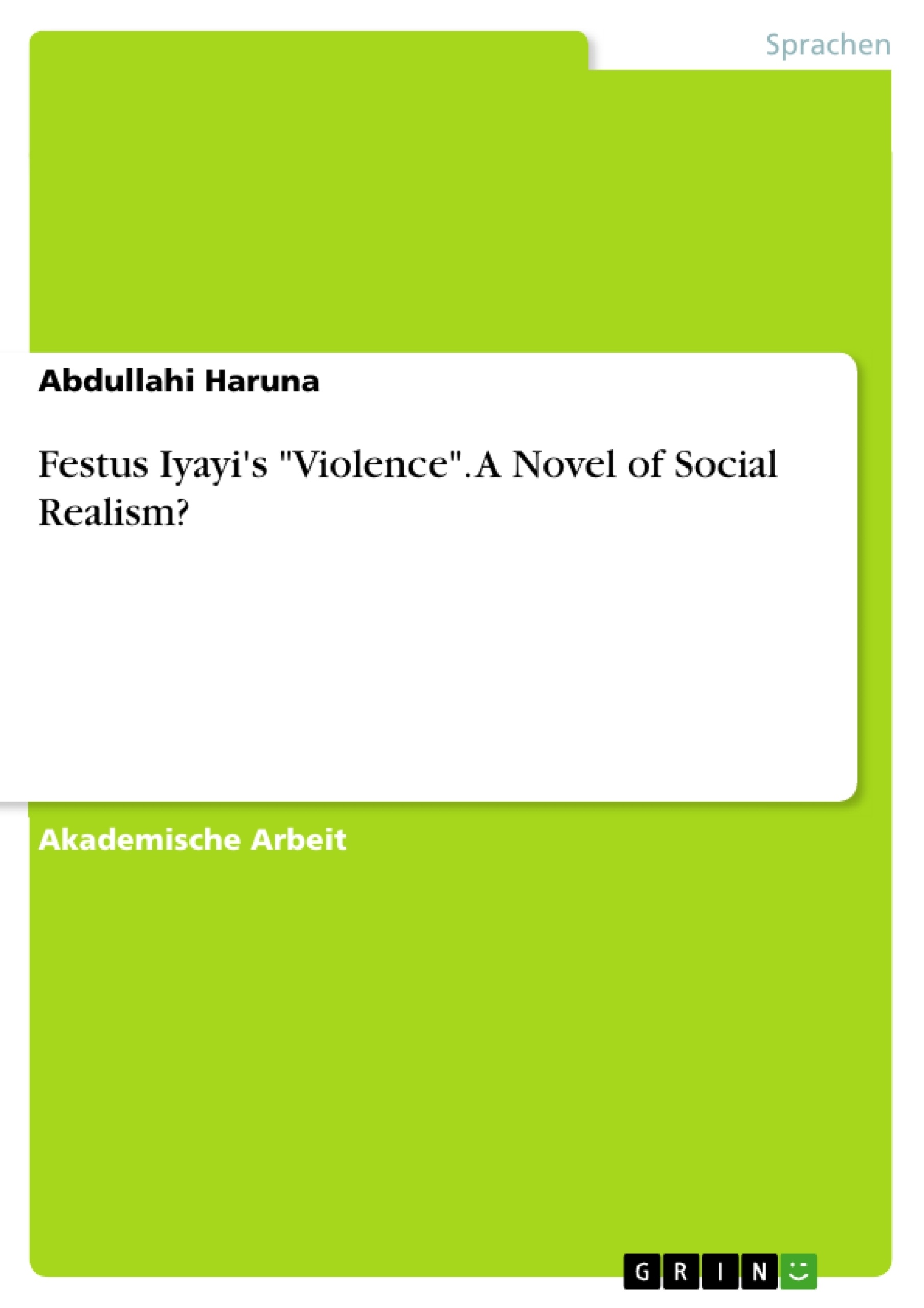This study interrogates the deployment of Social Realism in Festus Iyayi’s "Violence" (1979). While some scholars hail Iyayi’s "Violence" as an accomplished novel of Social Realism, others do not accord the novel this status. This critical conflict of opinion presents an interesting subject of study. This paper examines whether or not "Violence" should be considered accomplished in accordance with the popular beliefs about works of Social Realism.
Towards this end, the concept of Social Realism and its tenets are discussed and applied in the assessment of Iyayi’s "Violence". The weaknesses and strengths of Iyayi's deployment of the concept in the novel are thereby identified and discussed. The paper thus concludes that although Iyayi’s "Violence" is significant in its treatment of corruption and injustice in society, the novel has some significant flaws in handling the techniques of Social Realism.
Inhaltsverzeichnis
- Introduction
- Social Realism and its Tenets
- Literature Review
- Deployment of Social Realism in Violence
- Summary and Conclusion
- References
Zielsetzung und Themenschwerpunkte
Diese Studie analysiert die Verwendung des Sozialrealismus in Festus Iyayis Roman "Violence". Der Autor bemüht sich, die Probleme der Korruption und Ungerechtigkeit in Nigeria durch den Sozialrealismus aufzudecken und so eine gesellschaftliche Reform anzuregen. Die Arbeit untersucht, ob "Violence" den Kriterien des Sozialrealismus gerecht wird, angesichts der unterschiedlichen Meinungen von Kritikern.
- Analyse der Verwendung des Sozialrealismus in "Violence"
- Bewertung der Stärken und Schwächen von Iyayis Darstellung des Sozialrealismus
- Untersuchung der Kritik an "Violence" im Kontext des Sozialrealismus
- Identifizierung der zentralen Themen wie Korruption, Ungerechtigkeit und sozialer Wandel
- Betrachtung des Romans als Instrument für gesellschaftliche Reform
Zusammenfassung der Kapitel
- Introduction: Die Einleitung stellt die Problematik der unterschiedlichen Interpretationen von "Violence" im Hinblick auf den Sozialrealismus dar und skizziert den Fokus der Studie.
- Social Realism and its Tenets: Dieses Kapitel definiert den Sozialrealismus und erläutert seine wesentlichen Merkmale anhand der Werke verschiedener Autoren.
- Literature Review: Dieser Abschnitt bietet einen Überblick über die bestehende Literatur zum Thema Sozialrealismus und diskutiert die unterschiedlichen Meinungen zu "Violence" als Sozialrealismus-Roman.
Schlüsselwörter
Die wichtigsten Schlüsselwörter und Themen des Textes sind Sozialrealismus, Festus Iyayi, "Violence", Korruption, Ungerechtigkeit, gesellschaftliche Reform, Nigeria, politische und soziale Lebensverhältnisse, Literaturkritik, literarische Analyse und Textinterpretation.
- Quote paper
- Abdullahi Haruna (Author), 2014, Festus Iyayi's "Violence". A Novel of Social Realism?, Munich, GRIN Verlag, https://www.grin.com/document/470745



